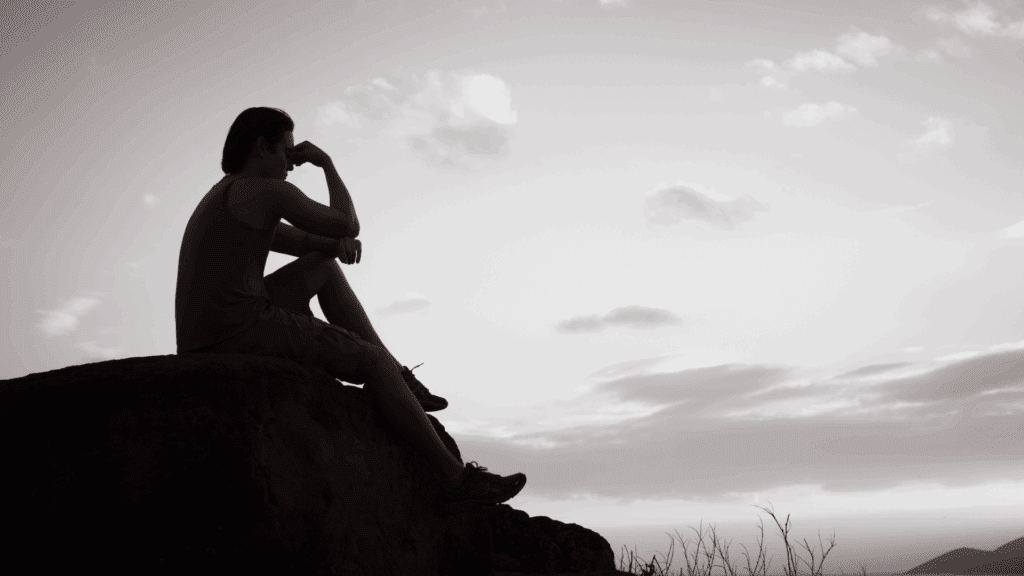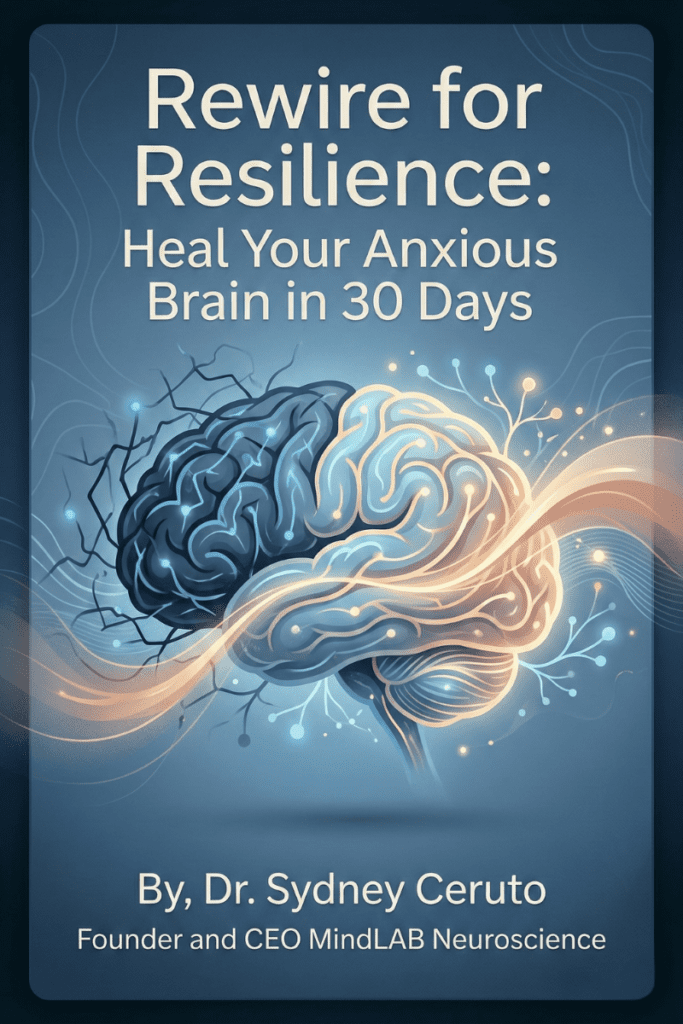What Does It Mean to Be Autophobic?
To be autophobic means living with an overwhelming fear of being alone—anxiety that reaches far beyond the normal discomfort people may feel during brief periods of solitude. Someone who is autophobic experiences intense dread or panic at the very idea of separation, whether they are in familiar settings or surrounded by others. The autophobic mind perceives aloneness as a threat, triggering distress that can include racing thoughts, agitation, or even physical symptoms like a pounding heart or shortness of breath.
While most people can manage or even enjoy solo time, the autophobic individual finds the prospect of being alone intolerable, constantly seeking reassurance, planning social contact, or avoiding situations that might lead to isolation. This condition overrides logic—those who are autophobic fully recognize that their reaction is out of proportion, but the emotional and physical responses remain overwhelming and challenging to control.
The fear is relentless, affecting relationships, self-confidence, and daily routines, and often hiding behind excuses or avoidance behaviors. In many cases, being autophobic leads to dependency on others, loss of independence, and reduced quality of life. Recognizing when someone is autophobic—not just lonely—is the critical first step in addressing and ultimately transforming this life-limiting condition.
Autophobic or Just Lonely? The Science of Distinction
At first glance, it’s easy to confuse being autophobic with simply feeling lonely. Both conditions involve discomfort with solitude, yet they originate from distinct emotional and neurological roots. An autophobic person is not merely wishing for company—they experience genuine anxiety, sometimes panic, when faced with the reality or even the anticipation of being alone. Unlike fleeting loneliness, the autophobic experience is persistent and often overwhelming.
Loneliness, in contrast, is a universal human feeling that arises from a lack of meaningful social connection. Most people who feel lonely may yearn for deeper relationships, new experiences, or shared moments, but their basic sense of safety remains intact. The autophobic individual, however, often feels unsafe and unsettled both alone and among others if separation or abandonment seems even remotely possible.
Neuroscience offers insight into these differences. For the autophobic person, the threat-detection circuits in the brain—especially the amygdala—overreact at the prospect of solitude. This triggers a hormonal surge of stress chemicals, such as cortisol and adrenaline, producing symptoms ranging from trembling hands to a racing pulse. In the case of a lonely person, brain activity tends toward decreased reward and motivation, but not necessarily panic or terror.
Psychologically, being autophobic propels the person into a cycle of avoidance and dependency. They may over-schedule encounters and resist quiet time, viewing any moment of independence as dangerous. Loneliness may motivate someone to reach out for new connections or engage in self-reflection, but it does not disrupt daily functioning.
Socially, autophobic individuals struggle to enjoy time with others because the anxiety centers on potential abandonment rather than a lack of friends. They may feel uneasy in crowds, restless during events, and hyper-attuned to cues signaling someone might leave.
Understanding whether one is autophobic or simply lonely is essential. The wrong support strategy can reinforce dependency and anxiety, while a neuroscience-informed approach helps break the fear cycle. When personal development coaching detects these subtle differences, it becomes possible to guide autophobic clients toward true independence, emotional safety, and a balanced appreciation for both togetherness and solitude.
The Autophobic Mind: Neuroscience and Survival Circuits

The autophobic brain is wired to treat solitude as an imminent threat, far beyond the experience of mere loneliness. For someone who is autophobic, the anticipation of being alone triggers intense activity in areas like the amygdala, which is responsible for fear response and emotional memories. This activation triggers a chemical chain reaction, flooding the body with stress hormones such as cortisol and adrenaline, preparing it for the “fight or flight” response as if facing a real danger.
Even when objectively safe, the autophobic person’s brain interprets isolation as abandonment or vulnerability. This results in a fast heartbeat, tense muscles, racing thoughts, and an urgent need to escape or find company. While others may relax in solitude or use downtime for self-reflection, the autophobic individual reports discomfort, unease, and even panic with every quiet moment.
Scientifically, this response stems from evolutionary circuits initially designed for survival in early human communities, where isolation truly meant risk. Today’s autophobic brain retains those same hyper-vigilant alarm systems, but modern life rarely presents actual danger when alone. The chronically activated threat-detection circuits drive avoidance, dependency, and emotional volatility, often leading to struggles with relationships, confidence, and independence.
Recent neuroscience studies show that the autophobic mind is less able to regulate stress and emotions, causing repeated cycles of anxiety and search for reassurance. Rather than enjoying healthy connections, the autophobic person may become preoccupied with preventing solitude, losing opportunities for self-growth and emotional resilience.
Understanding this brain science is critical in personal development coaching. By recognizing how the autophobic response “hijacks” logical thinking and drives behavior, coaches can guide clients to reframe their fears, retrain neural pathways, and build a sense of safety in solitude. This begins the process of breaking free from the cycle and reclaiming autonomy, peace, and a new relationship with aloneness.
Coaching the Autophobic Individual: Brain-Based Strategies for Change
When working with someone who is autophobic, neuroscience-based coaching pivots away from generic talk therapy or surface-level reassurance. The heart of effective change lies in understanding how the autophobic mind interprets solitude as a threat, and then using evidence-based, brain-focused tools to shift those circuits.
The journey begins with guided self-monitoring. An autophobic client learns to identify the earliest signs of escalating anxiety—physical sensations, thought patterns, and behavioral impulses triggered by the prospect of being alone. By tracking these signals with digital mood tools, journaling, or wearable devices, clients transform vague dread into concrete, manageable data.
The next step is to gradually build tolerance for being alone, but never through sudden or overwhelming exposure. Instead, the coaching process pairs tiny moments of solitude with powerful brain-calming rituals—such as rhythmic breathing, sensory grounding, movement, or focused gratitude practice. These practices create new, positive associations with quiet time, directly countering the stress response that defines the autophobic condition.
As the client’s confidence increases, the coaching process introduces “success stacking”—stringing together small solo achievements, from a peaceful cup of tea to an afternoon without distraction. Each win is celebrated and neurologically anchored, tapping the brain’s reward system and building emotional resilience.
Crucially, a coach helps an autophobic person untangle the evolutionary story fueling their fear. Clients explore how the brain’s bias toward sociability, which once helped humans survive, now misfires in safe, modern settings. This insight reframes the fear—not as a flaw, but as an overactive survival instinct ready for gentle reshaping.
All along, the autophobic client is supported through accountability, reflection, and tailored education about neuroplasticity. With each coached step, the brain learns that solitude can be safe, even enjoyable, and that independence does not threaten social connection.
Personal development coaching fueled by neuroscience offers the autophobic individual a truly customized roadmap—one that honors both their biology and their potential for profound change.
Coaching the Autophobic Client: Neuroscience in Action
Empowering an individual who is autophobic goes far beyond traditional support or surface-level reassurance. In neuroscience-based personal development coaching, the focus is on understanding how the autophobic mind and body react to solitude and then creating brain-friendly pathways that gently reshape perception, behavior, and resilience.
The journey typically begins by helping an autophobic client track their unique stress signals. Using simple self-assessment tools or real-time journaling, individuals learn to recognize early warning signs—such as muscle tension, racing thoughts, and the urge to reach for a phone—before panic sets in. Step by step, the autophobic client learns to interrupt old patterns. Instead of avoidance, the coaching process introduces micro-practices—minute-long moments of intentional solitude paired with calming routines, such as mindful breathing or grounding exercises. This isn’t forced exposure, but a gentle retraining of the brain’s threat circuits.
As the client learns that small, safe experiences with being alone do not lead to danger, the autophobic brain begins to relax. Victories—no matter how small—are anchored with positive reinforcement: celebrating an uninterrupted solo coffee break, a peaceful drive without constant calls, or a tranquil walk. These achievements are not just ticked off a list; they are actively “coded” as successes within the brain’s emotional memory, helping the autophobic individual develop new, healthier associations with independence.
A crucial component of the process is the client’s understanding of their own neurobiology. Coaches guide autophobic clients to investigate how their brain’s ancient social instincts—critical to survival thousands of years ago—don’t always map to the reality of a safe, modern life. Over time, this self-awareness alleviates shame and self-judgment, paving the way for genuine growth.
Throughout, the coaching plan adapts to the individual: some autophobic clients benefit from incorporating wearable tech to visualize stress patterns, while others thrive on reflective writing or conversation. The ultimate goal is always the same—to help each unique person move from a life constrained by fear of being alone to one animated by curiosity, strength, and self-possessed calm. With neuroscience-based personal development, every autophobic client gains not just strategies but a newfound trust in their own capacity for independence.
Simone’s Story: Breaking Free from an Autophobic Life
Simone was a driven professional whose career success masked struggles that few could see. Outwardly, she led projects, managed teams, and conquered industry challenges with confidence. Inside, though, Simone lived every day in the shadow of her fear—terrified of even a brief moment alone. Her calendar was always full: meetings, social events, conference calls, errands with friends. Still, even with constant company, Simone’s mind raced with panic whenever she sensed the possibility of isolation.
Simone’s autophobic pattern first showed itself in subtle ways: talking nonstop to avoid silent gaps, sending dozens of “just checking in” texts, and feeling relieved but exhausted after group activities. The prospect of spending a weekend alone made her physically anxious, triggering heart palpitations and shortness of breath. These feelings intensified after a relocation to a new city, where Simone’s support network shrank overnight and her symptoms deepened. She left the TV or radio on in every room, mindlessly scrolled through social media when alone, and declined invitations that required her to attend or travel by herself.
Despairing for a solution that wouldn’t involve medication or dismiss her experience, Simone turned to neuroscience-based personal development coaching. Our first step was to map her autophobic reactions in detail. Simone began journaling about her physical sensations, thoughts, and actions during solo moments. She used a wearable device to track stress markers, gaining real-time feedback about her body’s response. We broke big fears into micro-challenges, practicing intentional solitude in safe situations: five minutes alone in her office, a short walk by herself, reading quietly for one uninterrupted chapter.
After every small success, Simone and I would celebrate, focusing on how courage changes both the mind and the body. Simone learned calming rituals that tapped into her nervous system, such as slow breathing, mindfulness, and visualization. She reflected on her evolutionary psychology, recognizing that her instincts arose to keep her safe, but that she could now recalibrate her brain’s alarms. Over weeks, Simone’s neurochemical response to solitude shifted: panic subsided, replaced by curiosity and moments of pride.
Actual progress came in stages. Simone learned to tolerate quiet periods and even developed self-care routines for solo weekends. She participated in group mastermind sessions to normalize her experience and to draw strength from others navigating challenges. She practiced building positive associations with independence by arranging short, enjoyable activities alone and tracking each victory in a digital dashboard.
The journey was not linear; Simone encountered setbacks and moments of doubt. But with each cycle, her autophobic responses weakened, her confidence grew, and her relationships became healthier—less dependent and more authentic. Today, Simone enjoys her own company and views quiet time as an opportunity to recharge, rather than something to fear. Her autophobic history shaped her journey, but neuroscience coaching and her willingness to try changed her future. Simone’s success demonstrates that even deeply ingrained fears can be transformed, one step at a time, with the proper support and science-based tools.
Building Lasting Change: Neuroplasticity and the Autophobia
Rewiring the autophobic mind is possible thanks to neuroplasticity—the brain’s ability to adapt, reconfigure, and create new patterns of emotional resilience. For someone who is autophobic, the transformation begins by systematically replacing fear-based associations with moments of safety and self-empowerment. Each successful experience with brief, planned solitude sends new signals to the nervous system, encouraging growth rather than a sense of threat.
Progress for an individual is measured not just in the absence of panic but in tangible gains of independence, confidence, and emotional stability. As cycles of anxiety diminish, daily routines grow less reactive and more intentional. The person who was autophobic begins to identify as someone who can enjoy solo time, make measured decisions, and value both connection and autonomy.
Sustaining change involves regular practice—journaling victories, designing self-care rituals, and embracing supportive accountability. In neuroscience-based personal development coaching, clients learn to visualize growth in practical ways: charting stress levels, celebrating solo accomplishments, and gently extending boundaries. The autophobic journey is uniquely personal, always requiring patience, compassion, and repeated encouragement.
With time, individuals find that situations which once triggered dread—quiet evenings, travel, reflection—become opportunities for self-discovery and renewal. Relationships, once strained by dependency, improve as confidence in solitude rises. Instead of fearing autonomy, the formerly autophobic person cherishes independence as a source of strength.
This neuroplastic change is more than symptom relief—it is a complete recalibration of identity and potential. The autophobic narrative no longer defines the future. With the right science-based tools, it’s possible to move beyond fear and into a life animated by resilience, curiosity, and genuine peace with oneself.
Independence Redefined: Sustaining Resilience Over a Lifetime

For those who are autophobic, proper recovery isn’t just about conquering a single fear—it’s about building resilience and autonomy that lasts for years to come. The process is rooted in daily micro-practices and a commitment to rewiring old pathways. People who were once autophobic can often achieve long-term success by setting small, realistic goals for solo experiences, gradually increasing the challenge as their confidence grows.
Maintaining this progress requires practical routines. Mindful breathing, scheduled solo activities, and frequent self-reflection are all vital habits that help an autophobic individual stay grounded. They also learn to recognize stress signals early, giving themselves permission to pause, recalibrate, and apply calming strategies before anxiety escalates.
Support is crucial in sustaining long-term gains. Many people who were formerly autophobic continue to participate in group masterminds or online communities where they can discuss experiences, setbacks, and breakthroughs. Celebrating each step forward—and normalizing temporary setbacks—helps prevent the isolation or shame that can cause old fears to resurface.
Clear boundaries matter as well. The once-autophobic person learns to communicate confidently, explaining their needs to loved ones and allowing space for solo pursuits without guilt. Over time, this practice transforms solitude from a threat to a source of renewal, creativity, and personal mastery.
Lifelong success also hinges on self-compassion. Instead of judging moments of discomfort, the resilient individual reframes these as opportunities to reinforce their progress. By drawing on neuroscience-based tools and adopting a growth mindset, those who suffer from a fear of being alone can embrace both their independence and their relationships—living in a future where being alone is no longer something to fear, but something to savor.
From Vulnerability to Strength: Celebrating Autophobic Recovery
Long-term recovery and empowerment for someone who was once possessed by this fear is not a linear process—it’s a continuous journey of growth, learning, and self-acceptance. Those who used to panic at the thought of being alone eventually discover ways to transform vulnerability into enduring strength. They look back and see not just the battles they overcame, but the inner resources they cultivated along the way.
Daily life for a previously autophobic person becomes a laboratory for resilience. Quiet mornings, solo walks, time devoted to hobbies, and travel are opportunities to reinforce new associations. Purposeful solitude transforms from distressing background noise into a source of creativity, rest, and authentic self-discovery.
The journey is often supported by a network, including coaches trained in neuroscience, mentors, supportive friends, or online communities. Sharing milestones, setbacks, and insights builds a sense of belonging. It reminds the formerly autophobic individual that they are not alone in their experience, even on solitary days.
Success is measured in small acts: enjoying a meal alone with calm, setting personal boundaries, advocating for independence in relationships, and facing new situations without avoidance. Gratitude, humor, and self-reflection all enrich the experience, helping the individual celebrate change rather than dwelling on old fears.
There will always be moments when anxiety tries to resurface. The difference is that the person who was autophobic now has tools—mindful breathing, movement, reframing, and positive routines—to navigate those moments with grace. Over time, what once felt like a life sentence of dependency becomes a powerful story of adaptation, courage, and personal mastery.
Being autophobic is no longer an identity, but a chapter in a lifelong narrative of growth. With neuroscience-based coaching and a commitment to self-compassion, anyone can transform isolation into empowerment and rewrite the future in their own terms.
The New Identity: Life Beyond Autophobia
One of the most powerful moments in the autophobic recovery journey is realizing that a new identity is within reach. The label “autophobic” no longer serves as the central theme; instead, it becomes a reference point—a reminder of the strength, courage, and skills developed along the way. People who once combatted relentless fear now walk through life with a sense of achievement and the boldness to pursue what matters.
This shift is deeply transformational. Where anxiety about solitude once shaped choices, plans, and relationships, those who have moved past being autophobic now use independence as a springboard for growth. Adventures, reflection, and personal refinement become gateways to fulfillment rather than reminders of vulnerability.
Connections are enriched, too. As confidence in solitude grows, friendships and partnerships thrive with more authenticity and less hidden dependency. People find themselves offering support to others grappling with similar fears, transforming their personal journey into a catalyst for collective empowerment.
Daily practices become embedded in life: regular solo time is not just tolerated but treasured; boundaries and personal space are honored as a means to respect oneself as well as relationships—moments of anxiety, when they do appear, prompt reflection and skillful response, not avoidance.
The formerly autophobic person becomes a model for what’s possible—someone who chose to challenge ancient fears with modern neuroscience, support, and self-compassion. Their story offers hope for anyone wondering if meaningful change is possible. The lessons learned ripple outward, creating communities and cultures where vulnerability no longer means weakness, and solitude can stand as a source of strength.
The Ripple Effect: How Overcoming Autophobia Inspires Others
One of the most rewarding aspects of successfully overcoming autophobia is seeing that change radiate outward, influencing friends, partners, and even entire communities. People who once viewed solitude with dread often become champions for personal development, offering encouragement and insight to others who are just beginning the journey.
When a formerly autophobic individual shares their story, they ignite hope—showing that it’s possible not just to endure, but to thrive on one’s own. This newfound confidence creates positive momentum, motivating others to face their own uncertainties. Conversations about vulnerability, independence, and self-worth become richer and more constructive.
Beyond personal relationships, the transformation process creates broader ripple effects. Workplaces and families benefit from individuals who bring balanced boundaries, emotional intelligence, and a spirit of collaboration—not dependency. People who have overcome autophobic patterns inspire openness in communication and model the resilience needed for meaningful change.
Even small acts, like taking solo adventures or advocating for healthy boundaries, inspire collective courage. As these individuals demonstrate what’s possible, communities become safer spaces for growth, experimentation, and emotional honesty.
Ultimately, beating being autophobic brings freedom not just for the individual, but for everyone within reach of their story. It empowers others to believe in their own believe in their own adaptability to evolve—even when ancient fears seem insurmountable. This is how personal victory becomes a catalyst for a healthier, braver society.
Strategies for Lifelong Resilience: Tips for the Autophobic Journey
As someone who was once autophobic, they move beyond fear, build a toolbox of routines and habits that support lasting independence. These strategies aren’t just quick fixes—they’re ongoing commitments to personal growth, emotional regulation, and self-compassion.
- Celebrate small victories regularly; track solo successes, journal about quiet moments, and mark each milestone with pride.
- Schedule intentional periods of solitude in safe, comfortable settings, and then reward these moments to rewire nervous system responses gradually.
- Practice mindful movement and breathwork to redirect nervous energy and remain calm and centered, even when alone, using neuroscience-based techniques.
- Create and maintain supportive boundaries in relationships by clearly communicating evolving needs for alone time, ensuring personal space is respected.
- Engage in regular wellness activities—such as exercise, creative hobbies, and restorative self-care—to make your solo time energizing and renewing.
- Cultivate ongoing self-awareness and compassion; accept moments of discomfort as usual, using setbacks as opportunities for reflection and growth.
- Proactively cultivate these habits to continue building confidence, curiosity, and gratitude for independence, thereby ensuring lifelong resilience after overcoming autophobia.
Ultimately, ongoing self-awareness and compassion cultivate ongoing resilience. Accepting that occasional discomfort is natural helps individuals navigate setbacks with patience, rather than spiraling into old patterns. By proactively maintaining these strategies, those who have overcome autophobia continue their journey with confidence, curiosity, and gratitude—for themselves and for their ability to thrive independently.
#autophobic #neuroscience #fearofbeingalone #personaldevelopment #coaching #resilience #emotionalregulation #selfefficacy #socialpsychology #clientcasestudy #autophoia #lonliness #lonely





